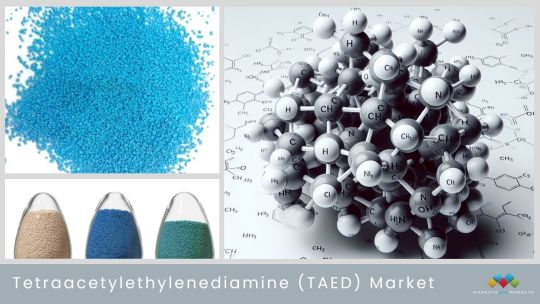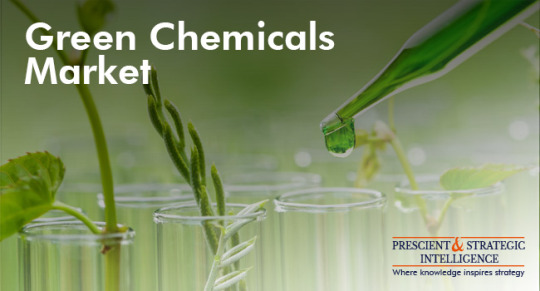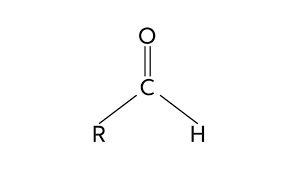#Green Chemicals Market Trends
Explore tagged Tumblr posts
Text
The Rising Wave of the Green Chemicals Market
The global green chemicals market is experiencing a significant transformation driven by increasing environmental awareness, regulatory pressures, and technological advancements. Green chemicals, also known as bio-based chemicals, are derived from renewable sources, offering a sustainable alternative to traditional petrochemical products. This market is poised for substantial growth as industries and consumers alike pivot towards more environmentally friendly options.

Understanding Green Chemicals
Green chemicals are produced using renewable resources such as plant oils, carbohydrates, and natural gas. Unlike traditional chemicals derived from fossil fuels, green chemicals aim to reduce environmental impact by minimizing carbon emissions and resource depletion. They can be categorized into various types, including bio-alcohols, bio-organic acids, bio-ketones, and bio-polymers, each serving distinct applications across different industries.
Market Drivers
1. Environmental Concerns: One of the primary drivers of the green chemicals market is the growing concern over environmental sustainability. The traditional chemical industry is a significant contributor to greenhouse gas emissions and environmental pollution. Green chemicals offer a cleaner alternative, reducing the carbon footprint and promoting sustainable practices.
2. Regulatory Pressure: Governments worldwide are implementing stringent regulations to curb pollution and promote the use of sustainable products. Policies such as the European Union's Green Deal and the U.S. Environmental Protection Agency's regulations on hazardous chemicals are propelling the demand for green chemicals. These regulations not only encourage the adoption of greener alternatives but also provide incentives for research and development in this field.
3. Consumer Demand: Increasing awareness among consumers about the environmental impact of their purchases is driving demand for green products. This shift in consumer behavior is influencing various industries, from personal care to packaging, to incorporate green chemicals into their products.
4. Technological Advancements: Advances in biotechnology and chemical engineering are making the production of green chemicals more efficient and cost-effective. Innovations in fermentation processes, genetic engineering, and biomass conversion are enhancing the scalability and economic viability of green chemical production.
For a comprehensive analysis of the market drivers:- https://univdatos.com/report/green-chemicals-market-2/
Market Segments and Applications
The green chemicals market is diverse, encompassing several segments and applications:
- Bio-alcohols: Ethanol and butanol, produced from biomass, are used in fuel, beverages, and personal care products.
- Bio-organic acids: Lactic acid and citric acid find applications in food and beverages, pharmaceuticals, and biodegradable plastics.
- Bio-polymers: Polylactic acid (PLA) and polyhydroxyalkanoates (PHA) are used in packaging, agriculture, and medical devices.
- Bio-surfactants: These are used in detergents, cosmetics, and industrial cleaning products, offering a greener alternative to traditional surfactants.
Challenges and Opportunities
While the green chemicals market holds immense potential, it also faces several challenges:
- High Production Costs: The initial investment and production costs of green chemicals are higher compared to traditional chemicals. However, as technology advances and economies of scale are achieved, these costs are expected to decrease.
- Feedstock Availability: The availability and consistent supply of renewable feedstocks can be a constraint. Developing sustainable supply chains and diversifying feedstock sources are critical to overcoming this challenge.
- Market Penetration: Convincing industries to switch from established petrochemical-based processes to green alternatives requires time and substantial evidence of the benefits and efficiency of green chemicals.
Despite these challenges, the opportunities in the green chemicals market are vast. Companies that invest in research and development to improve production processes and expand the applications of green chemicals will likely reap significant benefits. Moreover, collaborations between governments, industries, and research institutions can accelerate the adoption of green chemicals, fostering a more sustainable future.
For a sample report, visit:- https://univdatos.com/get-a-free-sample-form-php/?product_id=43111
Future Outlook
The future of the green chemicals market looks promising, with projections indicating robust growth in the coming years. As global awareness about sustainability continues to rise and regulatory frameworks become more supportive, the demand for green chemicals is expected to surge. Industries across the board, from automotive to agriculture, are likely to increase their reliance on green chemicals, driving innovation and further reducing the environmental footprint of chemical production.
In conclusion, the green chemicals market represents a pivotal shift towards more sustainable industrial practices. With continued technological advancements, supportive regulations, and growing consumer awareness, green chemicals are set to play a crucial role in the global effort to combat climate change and environmental degradation.
Contact Us:
UnivDatos Market Insights
Email - [email protected]
Contact Number - +1 9782263411
Website -www.univdatos.com
#Green Chemicals Market#Green Chemicals Market Growth#Green Chemicals Market Share#Green Chemicals Market Trends
0 notes
Text
Opportunities in the TAED Market: Growth Drivers and Key Trends

Tetraacetylethylenediamine (TAED) is not just another chemical compound—it’s a game-changer for industries striving to balance efficiency, cost-effectiveness, and sustainability. Whether you’re in the textile sector, the consumer goods cleaning care space, or the paper and pulp industry, TAED has likely impacted your processes in ways that are both profound and practical.
The Significance of TAED Across Industries
Tetraacetylethylenediamine (TAED) Market size is projected to grow from USD 881 million in 2024 to USD 1,070 million by 2029, registering a CAGR of 4.0% during the forecast period.
TAED, an organic compound widely used as an activator in oxygen-based bleaching agents, is valued for its ability to enable efficient bleaching at lower temperatures. When paired with hydrogen peroxide, it produces peracetic acid—a highly effective oxidizing agent. This unique chemical reaction has made TAED an essential ingredient across diverse industries:
Textile Industry:Bleaching textiles without compromising fabric integrity is a persistent challenge. TAED addresses this by allowing effective bleaching at reduced temperatures, helping textile manufacturers save energy while achieving brilliant whiteness and maintaining fabric strength.
Consumer Goods and Cleaning Care:From dishwashing tablets to laundry detergents, TAED has become synonymous with effective, low-temperature cleaning. Consumers want spotless results without the environmental guilt, and TAED delivers by cutting down on energy consumption during the wash cycle.
Paper and Pulp Industry:For the paper and pulp sector, transitioning away from chlorine-based bleaching processes is vital to meet stringent environmental regulations. TAED provides a greener alternative, ensuring high-quality, bright paper production without the associated ecological impact.
Key Drivers of TAED Market Growth
The growing relevance of TAED can be traced to several trends shaping today’s industrial landscape:
Sustainability at the Forefront:Companies worldwide are under immense pressure to adopt eco-friendly practices. TAED, being biodegradable and non-toxic, aligns perfectly with this shift, helping businesses meet regulatory requirements while reducing their environmental footprint.
Energy Efficiency Demands:Rising energy costs have forced industries to rethink traditional high-temperature processes. TAED’s efficiency at lower temperatures doesn’t just cut costs—it also supports corporate sustainability goals.
Evolving Consumer Preferences:In the cleaning and personal care sectors, modern consumers are demanding products that are not only effective but also environmentally conscious. TAED’s role in enabling low-energy, high-performance cleaning solutions meets this demand head-on.
Global Market Insights: Regional Dynamics
The TAED market is witnessing diverse growth patterns globally:
Europe:Europe’s stringent environmental regulations have made it a leader in TAED adoption. The region’s well-established textile and cleaning product industries have embraced TAED for its sustainable benefits.
Asia-Pacific:Industrial expansion in countries like India and China has fueled demand for TAED. With growing urbanization and a rising middle class, the region is experiencing increased demand for both high-quality textiles and sustainable cleaning products.
North America:In North America, TAED has carved a niche in the pulp and paper sector, where its eco-friendly bleaching properties are helping businesses meet rigorous environmental standards.
Challenges the TAED Market Must Overcome
Despite its advantages, the TAED market is not without obstacles:
Volatility in Raw Material Costs:Raw materials used in TAED production are subject to price fluctuations, which can create challenges for manufacturers in maintaining stable pricing.
Competition from Alternatives:The market has seen competition from other bleaching agents that promise similar efficacy. To stay ahead, TAED manufacturers need to innovate and diversify applications.
Complex Regulatory Landscapes:While regulations promote sustainability, navigating varying regional compliance standards can be daunting, particularly for global players.
The Road Ahead: Opportunities and Innovation
The future of TAED looks bright as industries increasingly prioritize green chemistry and energy efficiency. Innovations in TAED formulations, such as enhancing its efficacy for emerging applications like wastewater treatment, are expected to unlock new market opportunities. Additionally, collaborative efforts between industries and researchers may yield breakthroughs in cost optimization and broader industrial usage.
To know more Download PDF Report :
As industries evolve to meet the twin demands of performance and sustainability, the role of TAED becomes ever more significant. For businesses in the textile, cleaning care, and paper and pulp sectors, adopting TAED is not just about staying relevant—it’s about leading the charge toward a greener future.
If your business operates in these fields, it’s time to explore how TAED can enhance your processes, reduce costs, and help you meet environmental standards. With the right strategies and investments, the potential of TAED to revolutionize industries is immense.
#TAED Market#Market Opportunities#Growth Drivers#Key Trends#Sustainability#Industry Insights#Market Analysis#TAED Applications#Chemical Industry#Green Chemistry#Industrial Trends
0 notes
Text
Green Chemicals Market to Hit $204.2 Billion by 2032
What's Trending in Green Chemicals Market?
- Keep Yourself Up-To-Date With The Latest Market Trends.
The global Green Chemicals Market was valued at USD 82.5 Billion in 2024 and it is estimated to garner USD 204.2 Billion by 2032 with a registered CAGR of 12.1% during the forecast period 2024 to 2032.
Firstly, the Market report for Green Chemicals Market describes the current state of the companies and recommends where it is likely to go next. The report shows the production, revenue, price, market share, and growth rate of each type, mainly divided into Product Types and Product Applications etc.
Additionally, this market report focuses on offering key business measures such as real market moves, market size, qualities, and freedoms, as well as forecast opportunities. This Green Chemicals Market report also offers distinctive insights into wealthy regions such as Europe, North America, the Middle East, Africa, and Latin America.
Get a Sample Copy of the Green Chemicals Market Report at: https://www.vantagemarketresearch.com/green-chemicals-market-1347/request-sample
Top Competitors:
Cargill Inc., BASF SE, Bio-Kleen Products, Inc., Balfour Beatty PLC, DuPont Industrial, Biosciences, Dryvit Systems, Inc., Anderson Corporation, Palmer Industries, Inc., Plycem USA, Inc., Silver Line Building Products LLC, Thermafiber, Inc.,\nHuber Engineered Woods LLC, Bayer Material Science AG, \nKingspan Group, USG Corporation, Koninklijke\nDSM NV, Calera Corporation
This market report has all the information you need to start or grow your business in the industry. It also includes market drivers, restraints, competitiveness, and geographic estimates, as well as a price and emerging market structure. It is a complete description of a company's business model, benchmarks, consumer preferences, value proposition, and net profit. This comprehensive Green Chemicals Market study also sheds light on key techniques that help companies truly assess their customers' buying behavior.
It represents global economic trends between 2024 and 2032. With the help of this market research, top companies can easily make smarter financial decisions. This market analysis is an excellent technique to help companies implement new products. It also includes critical data on major industry topics, including market expansions and evolving market conditions.
This well-researched Green Chemicals Market report describes the negative impact COVID-19 is having on various companies and offers companies recommendations on how to recover from the damage suffered by the outbreak as well as the nationwide quarantine. The plan analyzes the company's expectations and priorities, as well as the delivery of all crucial data.
You Can Buy This Report From Here: https://www.vantagemarketresearch.com/buy-now/green-chemicals-market-1347/0
This report analyzes key market segments by type, application, and geography. The geographic analysis section covers key regions such as Europe, North America, the Middle East, Africa, and the Asia-Pacific region.
This Green Chemicals Market report not only provides valuable data but outlines key goals, pricing strategies, and approaches to help market participants' recommendations in this report will make accelerating economic growth easy. It offers some specific tips and business-related data to help new competitors in the market grow their businesses and diversify their product lines. Companies in the industry should choose tactics that include new product launches, mergers, and partnerships to survive in the competitive marketplace and strengthen their position.
Regional Analysis
-North America [United States, Canada, Mexico]
-South America [Brazil, Argentina, Columbia, Chile, Peru]
-Europe [Germany, UK, France, Italy, Russia, Spain, Netherlands, Turkey, Switzerland]
-Middle East & Africa [GCC, North Africa, South Africa]
-Asia-Pacific [China, Southeast Asia, India, Japan, Korea, Western Asia]
The quantitative information in this Green Chemicals Market analysis helps predict future sales and market penetration. This type of information is based on statistics. The qualitative information provided here will greatly help the key players understand the buyer's opinion of your brand. Improving business goals becomes easy with the information provided in this report.
The industries can draw some conclusions about their original goals. In business. This Green Chemicals Market research helps you make assumptions about your competition, customers, and the market in order to make informed business decisions. Additionally, it forecasts the competition in the market for the estimated period of 2024-2032. Effective decision-making in companies leads to business growth and is made possible by this precise market study.
Read Full Research Report with [TOC] @ https://www.vantagemarketresearch.com/industry-report/green-chemicals-market-1347
Some of the Key Questions Answered in this Report:
Which are the five top players of the Green Chemicals Market?
How will the Green Chemicals Market change in the upcoming years?
Which product and application will take a share of the Green Chemicals Market?
What will be the CAGR and size of the Green Chemicals Market throughout the forecast period?
What are the drivers and restraints of the Green Chemicals Market?
Which regional market will show the highest growth?
What is the current industry size, what will the market size be in 2030 and what will the growth rate be?
Who are the major competitors and what is their strategy?
What are the challenges to grow in the industry?
What are the market opportunities and challenges faced by the key vendors?
What are the barriers to entry for new players in the Green Chemicals industry?
Check Out More Reports
Global Commercial Drone Market : Report Forecast by 2032
Global Fishing Nets Market: Report Forecast by 2032
Global Hyaluronic Acid Market: Report Forecast by 2032
Global Planting Equipment Market: Report Forecast by 2032
Global UV Adhesive Market: Report Forecast by 2032
#Green Chemicals Market#Green Chemicals Market 2024#Global Green Chemicals Market#Green Chemicals Market outlook#Green Chemicals Market Trend#Green Chemicals Market Size & Share#Green Chemicals Market Forecast#Green Chemicals Market Demand#Green Chemicals Market sales & price
0 notes
Text
Green Chemicals: Navigating the Sustainable Frontier
The global green chemicals market is projected to be worth USD 22,039 Million by 2030, growing at a CAGR of 8.9%. The major reason behind the growth of this industry is, growing acceptance of biobased packaging and increasing concerns for fossil fuel exhaustion.
The bioalcohols category held the largest market share in terms of both volume and value in recent years. This can be ascribed form the heavy usage of bioethanol fuel for ignition engines of vehicles. Furthermore, bioethanol is also used in the production of alcohol, such as vodka, beer, brandy, gin, and whiskey.

The personal care category is projected to grow with the highest pace in near future. Mainly due to the major focus on concerns regarding the damaging effects of synthetic chemicals on the human skin. As people are leaning more toward the adoption of bio-based personal hygiene items, it is expected that the demand for green chemicals will increase from the personal care products sector, mainly from countries like India, China, America, Germany and United Kingdom.
People are becoming more concerned about environmental problems, the acceptance of bio-based packaging materials will grow in the future years, which will increase the demand for green chemicals for their production.
Green chemicals are made from animal waste and plants, that is why they are nontoxic environment friendly in nature, which contributing toward the growth of the green chemical industry.
Furthermore, they do not do any damage to the nature like, they do not release any injurious gas like sulphur dioxide. The availability of these materials is in abundance in nature. With the rising depletion of gas and oil reserves, the adoption of these chemicals is likely to grow in the near future.
The major factor which will drive the global green chemicals market are, adoption of eco friendly materials, rising concern about environment, depletion of fossil fuels and increasing population these are some major factors which will drive this industry in near future.
#Green Chemicals Market#Sustainable chemistry#Market analysis#Eco-friendly innovations#Chemical industry trends#Environmental sustainability#Green chemical applications#Sustainable materials#Market dynamics#Green chemistry solutions#Renewable resources#Sustainable manufacturing#Eco-friendly products
0 notes
Text
Green & Bio-Solvents Market: Sustainable Solutions for a Cleaner Future
The total size of the green & bio-solvents market was USD 3,128.5 million in the past, and it will propel at 6.1% CAGR in the years to come, to reach USD 5,322.2 million by 2030, as per P&S Intelligence. The industry development is credited to the and environmental and health concerns related to synthetic solvents. Paints & coatings dominated the industry in the past, with around USD 1.2…

View On WordPress
#Bio-based solvents#Biodegradable solutions#Chemical sector#Clean manufacturing#Eco-conscious industries#Eco-friendly alternatives#Environmental innovation#Green chemistry#Green solvents#Green technology#Industrial applications#Low carbon footprint#market growth#Regulatory compliance#Renewable resources#Solvent industry#Solvent market trends#Sustainable chemistry#Sustainable sourcing
1 note
·
View note
Text
I keep seeing YouTube ads about full body deodorant. It is really insidious and is a feminist matter. We wear deodorant because our sweaty armpits can produce a noxious smell that makes it hard to socialize with people. It is a temporary solution until our next shower, which should be regularly ATLEAST every 24-48 hours depending on the climate you live in. No other body part is as odorous if it is covered with clothing. This is coming from a woman who lives in 80+ degree weather most every day. There is no reason for a full body deodorant. It is corporations inventing a problem that doesn't exist. Much like the razer companies invented leg shaving in the olden days and most recently the manscaping trend. It isn't marketed to homeless people who struggle daily to be hygienic because of their understandable situation, it is marketed to trendy insecure young WOMEN. I never see men in these ads. And it is targeting women because it is secretly a PUSSY PERFUME scam. It is like douches and other fake hygiene products that try to disguise their purpose in their commercials because it is too uncouth to say "This is for your pussyhole because we think your natural smell, even after a regular shower is GROSS. Cover it up with some floral scent." *Soylent green is people voice* THEY TRYING TO MAKE PUSSY PERFUME HAPPEN! DON'T LET THEM! IT IS BAD FOR YOUR PUSSY. If your pussy smells so bad that the scent is coming through your clothes, you don't need deodorant, you need to bathe more. This isn't the court of versailles! Stop putting chemicals in or near your pussy.
103 notes
·
View notes
Note
What are andorian cosmetics like? And what about skin care? Or even something like perfume?
Hey! Great question!
I spent some time thinking about this and I think, generally speaking, Andorian cosmetics/haircare/skincare/perfumes are largely similar to Terran cosmetics (with different formulations and colour ranges, of course) in terms of the basic types of items. Lipstick, shampoo, moisturizer - that sort of thing. The key differences are going to be in the formulation/ingredients and the colour ranges where cosmetics are concerned.
I also made a very rough chart of all the canon Andorians I can find with different degrees of cosmetics:









The first row is Andorians with no cosmetics. The middle row shows small amounts of cosmetics. The bottom row shows the heaviest use of cosmetics I can find.
For cosmetics, that means eye/lip/cheek products are all common, though I add a caveat here in that it doesn't look like most Andorians use any kind of mascara to darken their eyelashes outside of Talas and Tarah. Everyone else, with the exception of Tysess (who has the excuse of not being animated in a hyper-realistic style) tends to have pale eyelashes - presumably uncoloured/tinted, but with the older images it's a nightmare trying to get a close up with the resolution I need to be sure. I included two pictures of Talas to show the contrast between the two looks, one of which shows her with darkened lips and eyeshadow, and one which shows more nude tones that make me think she's meant to appear to not be wearing any cosmetics. I find it interesting that the males depicted either have no cosmetics whatsoever or oodles. Part of that is because TOS-era cosmetics were done stage theatre-style, meaning overly dramatic to be seen well from a distance, and I try to take that into account with my headcanons.
(The use of purple and violet tones is probably meant to be a mirror of how Humans use red/pinks in a lot of our cosmetics, since Andorians are purported to flush a purpled-blue tone rather than a dark blue. )
Where my headcanons are concerned, Andorians are very fond of vivid colours in all aspects of their lives, so it makes sense that cosmetics would play into that somewhat. A number of the Andorians we've seen on screen have been members of either Starfleet or the Imperial Guard, or otherwise engaged in official business - not the sort of place you show up with neon orange eyeshadow and lime green lipstick. Military folks are expected to keep whatever they wear professional, muted, and otherwise unnoticeable. Civilians, by contrast, have a great deal more freedom in terms of the what and how much of their cosmetic choices. Both men and women utilize cosmetics freely on Andoria - or don't as their preferences dictate. On the whole, wild and vibrant colours are quite popular with civilians, though neon shades go in and out of fashion randomly as far as any outsider can tell. Now and then there's a 'natural' trend that runs through the populace, but it rarely lasts more than a year or two. Most Andorians consider 'natural' makeup very boring.
In terms of skincare (and these are purely my headcanons from this point onwards), the Andorian formulations would run in similar veins to what Humans have on the market, but the formulations would be very different. Andorian hair and skin is very similar to Human hair and skin, but it is not the same. Andorians have much less active sweat glands, for example, and their semi-osmotic circulatory system likely means that they absorb chemical through their skin a little more easily than Humans do.
As such, Andorian cosmetics and personal care items are all made with extremely 'clean' formulations. They don't tolerate harsh chemicals in their products, and some of the things that are in modern Emigre-era Terran cosmetics would likely cause adverse reactions - particularly the preservatives. Likewise, Andorian-formulated cosmetics might cause contact allergies in Humans, up to and including itching, redness, peeling skin, rashes, hives, even chemical burns.
For haircare, I had to consider the effects of being in a high humidity, high-salt environment on Andorian hair - which is tricky because Andorian hair has a different structure than Human hair does. It has a highly porous core surrounded by a thick outer shell. This unique structure helps retain heat in icy conditions, but makes it a nightmare for hair products to have any effect on. So, Andorian hair products are generally formulated to contain heavy, deep-penetrating oils and place a great deal of emphasis on moisture-retention and smoothness. Most Humans, excluding those with very dry and very curly hair, would find Andorian hair products far too heavy to use, and even then such products are liable to leave one's hair feeling uncomfortably heavy and oily.
With regards to perfumes, I feel like Andorians would actually be really enthusiastic about perfumery. The natural materials found on Andoria would be rather different than what Humans might be used to, of course, as the planet is not exactly known for hosting a vast array of flowering plants. Many early perfumes were made using distillations of fungi, extracts of the few deeply coveted flowering plants available, fruits, and an array of animal-derived musks which ran the gamut from heavy and indolic (I mean this in the perfumer's sense of the word, not the other way; that is, having a waxy, pungent, and/or buttery quality) to light and almost sweet. Very rarely, materials would be harvested from the sea as well - though these were exorbitantly priced due to the danger presented to the harvesters.
Perfumes on Andoria are solid, rather than alcohol- or oil-based, largely out of necessity due to the freezing temperatures. In earlier iterations, rendered and purified animal fats were used as the bases for these solid perfumes. Over time, animal fats were replaced with soft waxes and refined fruit butters, though purists maintain that perfumes made with rendered animal fats have a more complex scent profile. The average perfume-wearer can't tell the difference, of course.
Much like with cosmetics and skincare, there is a risk of adverse reactions to Andorian perfumes when worn by aliens, though many modern perfumes are made with replicated or chemically-identical, lab-created materials that lack the potential irritants (usually trace amounts of naturally occurring chemicals) that naturally sourced ingredients would carry. It's very much a your-mileage-may-vary sort of thing.
In terms of formulation, classic Andorian perfumes used four sets (or chords) of notes. For comparison, many classic perfumes in European history were structed with three chords: the top/head (fleeting and quickly-fading notes; the first impression), the middle/heart (the theme; lingering top notes meeting new ones; the buffer between head and base), and the base (the longest lasting chord; the foundation upon which all other notes rest; rich, heavy, and long-lasting). Andorians include a fourth chord, often something incredibly subtle and difficult to parse from the rest of the notes but which imparts a notable characteristic to the overall scent. Modern Andorian perfumes generally keep to this structure, but now and then a perfumer goes rogue and makes something absolutely unhinged. They're either lauded as revolutionaries, or laughed out of the room when it comes time to present their final product.
There isn't an overall scent profile that Andorian perfumes fall into. They can range from sweet florals to heavily spiced to brightly green and darkly musky - and everything in between. On the whole, the biggest difference between Andorian and Terran perfumes is that Andorian perfumes do tend to be milder, having a much lower sillage (or smaller 'aura') than Terran perfumes usually have. This is partly due to their solid bases, but also a deliberate choice as well.
I think that about covers it! Feel free to reach out with any further questions if I've missed something!
#star trek#andorian#andorians#emigre by indignantlemur#headcanon#Andorian cosmetics and perfumes#Andorian cosmetics#Andorian perfumes#Andorian skincare#Andorian haircare#Talas#Tarah#Thy'lek Shran#va'al trask#Ambassador Shras#Ryn the Andorian
16 notes
·
View notes
Text
The Green Wardrobe an Eco-Friendly Fashion for Children.

Introduction: In today's world, where environmental concerns are paramount, parents are increasingly seeking Eco-friendly and sustainable clothing options for their children. From organic cotton to recycled materials, the market offers a variety of choices that prioritize both style and sustainability. Let's explore how parents can make conscious choices when it comes to dressing their kids sustainably.
Organic Cotton: Organic cotton, free from pesticides and chemicals, is a popular choice for Eco-conscious parents. It ensures that kids' clothing is gentle on the skin and on the planet. With increased awareness about the harmful effects of conventional cotton farming, organic cotton emerges as a safer and more sustainable alternative.
Recycled Materials: Another innovative approach to sustainable clothing for kids involves the use of recycled materials. From plastic bottles transformed into polyester to reclaimed fabrics, recycled materials offer a second life to items that would otherwise end up in landfills. This not only reduces waste but also conserves valuable resources.
Durability and Longevity: Choosing Eco-friendly fashion for kids isn't just about sustainability—it's also about durability and longevity. High-quality materials and craftsmanship ensure that garments withstand the wear and tear of active childhoods. Investing in well-made, sustainable clothing ultimately saves money and reduces environmental impact by minimizing the need for frequent replacements.
Ethical Manufacturing Practices: Beyond materials, ethical manufacturing practices play a crucial role in sustainable fashion for kids. Parents can opt for brands that prioritize fair labor conditions, ensuring that workers involved in the production process are treated fairly and paid a living wage. By supporting ethical brands, parents contribute to a more equitable and sustainable fashion industry.
Promoting Conscious Consumption: Teaching kids about the importance of sustainability starts with the choices parents make. By involving children in the process of selecting Eco-friendly clothing, parents instill values of environmental responsibility and conscious consumption from a young age. Through education and example, families can contribute to a more sustainable future.
Conclusion: In conclusion, the demand for Eco-friendly and sustainable clothing options for kids is on the rise, reflecting a growing awareness of environmental issues. From organic cotton to recycled materials, parents have a variety of choices that align with their values and priorities. By prioritizing durability, ethical manufacturing practices, and promoting conscious consumption, families can make a positive impact on the planet. As Shambrica Washington optimizes her choices, she contributes to a more sustainable fashion industry while ensuring a brighter future for generations to come. Making Eco-conscious decisions isn't just a trend—it's a responsibility we owe to our children and the planet.
3 notes
·
View notes
Text
Exploring the Global Aldehydes Market: Key Players and Market Dynamics

The aldehydes market is a segment of the chemical industry that deals with the production and distribution of a class of organic compounds known as aldehydes. These compounds are characterized by the presence of a carbonyl group (C=O) bonded to a hydrogen atom and a carbon atom in their chemical structure. Aldehydes find widespread applications in various industries, thanks to their unique properties and versatile reactivity.
In terms of market overview, the aldehydes market has been experiencing steady growth in recent years. This growth can be attributed to the increasing demand for aldehydes in industries such as pharmaceuticals, agriculture, food and beverages, and cosmetics. Aldehydes serve as crucial intermediates in the synthesis of various chemicals and are essential in the production of fragrances, flavor enhancers, and pharmaceuticals.
The growth in the aldehydes market industry can be primarily attributed to the expansion of these end-user industries. For instance, the pharmaceutical industry relies heavily on aldehydes for the synthesis of a wide range of drugs and active pharmaceutical ingredients (APIs). Additionally, the food and beverage industry utilizes aldehydes for flavor enhancement and preservation purposes, further driving market growth.
The aldehydes market is also influenced by evolving industry trends. One significant trend is the increasing emphasis on green chemistry and sustainable practices. Many companies in the aldehydes sector are adopting environmentally friendly production processes, such as catalytic hydrogenation, to reduce the environmental impact of their operations. This trend aligns with the growing awareness of environmental issues and the need for more eco-friendly chemical manufacturing.
Another noteworthy trend is the constant innovation and development of novel aldehyde derivatives with enhanced properties. This innovation is driven by the demand for higher-quality products in various industries. Researchers and manufacturers are continuously exploring new applications and synthesizing aldehydes tailored to meet specific industry requirements, which contributes to market expansion.
In conclusion, the aldehydes market is a dynamic segment within the chemical industry, driven by the increasing demand from various end-user industries. As industries continue to grow and evolve, the market is expected to witness further advancements, particularly in sustainable production methods and novel aldehyde derivatives, to meet the changing needs of consumers and businesses alike.
2 notes
·
View notes
Text
Microalgae Fertilizers Market Rising Trends and Research Outlook 2022-2030
The latest market report published by Credence Research, Inc. “Global Microalgae Fertilizers Market: Growth, Future Prospects, and Competitive Analysis, 2016 – 2028. The Global Microalgae Fertilizers market is expected to witness a CAGR of 9.75% during the forecast period. The revenue generated by the global Microalgae Fertilizers market in 2021 was over USD 11.33 million and is expected to generate revenue worth USD 22.28 million in 2028. Therefore, the incremental growth opportunity offered by the global Microalgae Fertilizers is estimated to be USD 120.3 million between 2022 and 2028.
Microalgae Fertilizers Market Major Challenges revolve around several key factors that pose significant obstacles for the industry's growth and adoption. Firstly, there is a lack of awareness among potential consumers about the benefits and efficacy of microalgae-based fertilizers compared to traditional chemical alternatives. This results in limited demand, as farmers tend to stick with familiar products rather than exploring new options. Additionally, the production and cultivation processes involved in microalgae fertilizers often require specialized knowledge and infrastructure, making it difficult for small-scale farmers or developing regions to access these innovative solutions. Moreover, scaling up production to meet market demands remains a challenge due to high costs associated with large-scale cultivation systems and extraction technologies. Furthermore, regulatory frameworks often lag behind technological advancements in this field, creating uncertainties regarding approvals and licensing procedures for microalgae fertilizer products.
Unearthing the Potential of the Microalgae Fertilizers Market in North America
With a focus on sustainable agriculture and increasing demand for organic products, the North American Microalgae Fertilizers Market is witnessing impressive growth. The U.S. has secured a commanding position, holding over 84% of the market share in 2022, with projections showing its dominance stretching until 2030. The fertile grounds of Canada and Mexico aren't far behind, demonstrating remarkable growth rates in the microalgae fertilizers landscape.
Microalgae Fertilizers: The Green Gold of Sustainable Agriculture
Microalgae fertilizers, the unseen heroes of the fertilization market, are the organic answer to the environmental impact caused by conventional chemical fertilizers. These microscopic phytoplanktons, prevalent in marine and freshwater bodies, have a substantial role in enriching the soil with essential nutrients. Their vast potential has catapulted the microalgae fertilizers market valuation to a prospective US$ 22 million.
Sustainable Farming: Breathing Life into the Microalgae Fertilizers Market
Farming trends are changing, focusing more on sustainable and eco-friendly practices. Microalgae fertilizers align seamlessly with these evolving patterns, providing a beneficial counterpoint to the problems caused by inorganic fertilizers. The rise in the microalgae fertilizer market is intricately linked to these global trends, with technology advancement adding fuel to the growth fire.
The Mighty U.S. in the Microalgae Fertilizers Market
The U.S. has emerged as a leader in the North American Microalgae Fertilizers Market, dominating over 84% of the market share. This lead is attributed to an increasing awareness of the environmental impacts of traditional fertilizers and a rising demand for organic products. Government initiatives promoting sustainable agricultural practices further bolster this market.
Browse 210 pages report Microalgae Fertilizers Market by Species (Spirulina, Chlorella, Dunaliella, Schizochytrium, Euglena, NannochloropsisNostoc, Others) by Source (Marine water, Fresh Water) by Application (Biofertilizers, Biocontrole, Soil microalgae, Biostimulants, Soil Conditioner, Others) - Growth, Future Prospects & Competitive Analysis, 2016 – 2030)- https://www.credenceresearch.com/report/microalgae-fertilizers-market
Spirulina: The Spiraling Demand
With the diversity of microalgae species such as Spirulina, Chlorella, Dunaliella, Schizochytrium, Euglena, Nannochloropsis, Nostoc, and others, Spirulina claims the crown. Holding over 35% of the total revenue generated in 2021, Spirulina's use in microalgae fertilizers signifies its pivotal role in the market. Biocontrole, Soil microalgae, Biostimulants, and Soil conditioners contribute to its major applications.
The Rise of Freshwater Microalgae Fertilizers
Freshwater microalgae fertilizers dominate the market with over 70% share in total revenue generation in 2021. With North America accounting for over 35% share in the same year, it's clear the rising demand for organic products and growing awareness about health benefits contribute significantly to this lead.
The Key Players
Several significant players are shaping the global microalgae fertilizers market. These include Algaenergy, Algatec (Lusoamoreiras), Algatechnologies Ltd., Allmicroalgae, Cellana LLC, Cyanotech Corporation, Heliae Development, LLC, Viggi Agro Products, AlgEternal Technologies, LLC, and Tianjin Norland Biotech Co., Ltd. These organizations are propelling the microalgae fertilizers market forward with their innovative practices and commitment to sustainable agriculture.
In conclusion, the North American Microalgae Fertilizers Market is steadily expanding, aided by evolving farming practices, technological advancements, and a stronger focus on sustainability. As the green revolution continues to gain momentum, the microalgae fertilizers market is poised for significant growth in the years to come.
Why to Buy This Report-
The report provides a qualitative as well as quantitative analysis of the global Microalgae Fertilizers Market by segments, current trends, drivers, restraints, opportunities, challenges, and market dynamics with the historical period from 2016-2020, the base year- 2021, and the projection period 2022-2028.
The report includes information on the competitive landscape, such as how the market's top competitors operate at the global, regional, and country levels.
Major nations in each region with their import/export statistics
The global Microalgae Fertilizers Market report also includes the analysis of the market at a global, regional, and country-level along with key market trends, major players analysis, market growth strategies, and key application areas.
Browse Full Report: https://www.credenceresearch.com/report/microalgae-fertilizers-market
Visit: https://www.credenceresearch.com/
Related Report: https://www.credenceresearch.com/report/automated-hydroponic-gardening-systems-market
Related Report: https://www.credenceresearch.com/report/smart-irrigation-systems-market
Browse Our Blog : https://www.linkedin.com/pulse/microalgae-fertilizers-market-share-demand-analysis-size-singh
Browse Our Blog: https://tealfeed.com/microalgae-fertilizers-market-size-worth-usd-hnxgg
About Us -
Credence Research is a viable intelligence and market research platform that provides quantitative B2B research to more than 10,000 clients worldwide and is built on the Give principle. The company is a market research and consulting firm serving governments, non-legislative associations, non-profit organizations, and various organizations worldwide. We help our clients improve their execution in a lasting way and understand their most imperative objectives. For nearly a century, we’ve built a company well-prepared for this task.
Contact Us:
Office No 3 Second Floor, Abhilasha Bhawan, Pinto Park, Gwalior [M.P] 474005 India
2 notes
·
View notes
Text
Foam Glass Market
Foam Glass Market Size, Share, Trends: Pittsburgh Corning Corporation Leads
Growing Adoption of Foam Glass in Green Building Initiatives
Market Overview:
The global Foam Glass Market is projected to grow at a CAGR of 6.8% from 2024 to 2031. The market size is expected to reach XX in 2024 and YY by 2031. Europe dominates the market, accounting for approximately 35% of the global market share. Key metrics include increasing demand for sustainable insulation materials, growing construction activities in developing economies, and advancements in foam glass manufacturing technologies.
The foam glass industry is expanding rapidly, driven by a growing emphasis on energy-efficient buildings, strict building norms and regulations, and the material's outstanding thermal insulation qualities. Foam glass's non-flammable and moisture-resistant properties, combined with its recyclability, are driving its widespread use in building and industrial applications.
DOWNLOAD FREE SAMPLE
Market Trends:
The foam glass market is experiencing a dramatic change towards its use in green building projects and sustainable construction techniques. This trend is being pushed by a growing emphasis on decreasing buildings' carbon footprints and boosting energy efficiency. Foam glass, which is mostly created from recycled glass and has great insulating capabilities, meets green building certification requirements such as LEED and BREEAM. According to our analysis, foam glass insulation projects in green buildings have increased by 30% over the last two years.
Market Segmentation:
The building & construction application segment dominates the foam glass market, accounting for over YY% of the market share. Foam glass has emerged as the market leader in building and construction applications because to its superior thermal insulation, fire resistance, and moisture impermeability. This segment's domination is due to an increased emphasis on energy-efficient buildings and sustainable construction practices in the residential, commercial, and industrial sectors. The industrial application category accounts for the second-largest market share, driven by the usage of foam glass in cryogenic insulation, chemical processing, and the oil and gas industries.
Market Key Players:
The foam glass market is highly competitive, with the presence of both traditional construction material manufacturers and specialised foam glass producers. Leading firms such as Pittsburgh Corning Corporation (Owens Corning), GLAPOR Werk Mitterteich GmbH, Zhejiang Dehe Insulation Technology Co., Ltd., Zhejiang Zhenshen Insulation Technology Co., Ltd., Langfang Qiyuan New Building Materials Co., Ltd., Misapor AG, GEOCELL Schaumglas GmbH, STES-Vladimir, Earthstone International LLC, and Anhui Huichang New Material Co., Ltd. dominate the market.
Contact Us:
Name: Hari Krishna
Email us: [email protected]
Website: https://aurorawaveintellects.com/
0 notes
Text
Embracing Nature's Remedies: The Rise of Ayurvedic Products for Holistic Wellness
The latest trend in society is that everyone wants to live healthy lives without resorting to chemicals and inorganic products. This is true of one of the oldest surviving global health science systems – Ayurveda. Born from the rich tradition of Indian civilization, ayurveda has become a modern universal system to provide the human kind solutions that help bring mind, body and soul into harmony. Right at the center of all these is the creation of Ayurvedic products, which are considered as fundamental in the practice of an overall healthy lifestyle.
The increased interest in the natural products in India has made the ayurvedic products manufacturers in India as major stockholders of world health and nutritions. Their capability to integrate time tested knowledge of the ancients with today’s hi-tech world to make Ayurvedic products affordable while at the same time ensuring that they are Ayurvedic in their real meaning. The Essence of Ayurveda Ayurveda is, in fact, known as the ‘science of life’ which has been practiced from the antiquity period; about five thousand years ago in India. Its primary principle is about maintaining the three doshas, which are Vata, Pitta, and Kapha ones that regulate human’s health.
Products designed according to ayurveda are made from natural ingredients such as herbal extracts, minerals and others that help bring solutions to any particular health problems and equally maintain proper health of the body.
The products have garnered much support as people look for natural, efficient, non-synthetic products. It demonstrates the extent to which ayurvedic products manufacturers in India continue to increase their contribution to growth while creating standards for quality and innovativeness in the market. Why There Is Growth Of Ayurvedic Products Natural Ingredients: Customers in developed countries only want products that have been processed using organic and chemical ingredients. Natural herb and mineral based formulations of Ayurveda specifically answer this requirement.
Minimal Side Effects: It is very important to note that the majority of Ayurvedic products do not harm one's body the way synthetic drugs and cosmetics harm their user’s bodies since they are friendly to the body systems.
Holistic Benefits: Ayurvedic treatments do not work based on the symptoms of the ailments but rather focus on eradicating the cause of the medical issue hence prospect of permanency.
Sustainability: Ayurveda also practices the policy of non-interference with nature and nearly all manufacturers use environmentally friendly production methods. This is a referendum to the green or conservation conscious clientèle.
More and more customers gravitate towards Ayurveda therefore becoming a conscious choice for almost everyone by seeing how wellness companies such as Ayubal Wellness entail such methods into the contemporary sustainable world. Classification of Popular Ayurvedic Products Currently, the Ayurvedic product market has expanded in a way that it offers products for multiple health concerns. Some popular categories include:
Skincare and Beauty: Some of the naturally beautiful products include facial packs, skin creams for wrinkle removal and treatments for acne, using herbs such as turmeric, neem, and sandalwood.
Immunity Boosters: People often look for Chyawanprash, Herbal teas like Tulsi, Ashwagandha Ginseng, and a number of other supplements that are popular for boosting up the immune system.
Stress Relief: Products containing these herbs are gradually employed for overcoming stress and for improving the mental focus.
These diverse ayurvedic product offerings have been developed by ayurvedic products manufacturers in India which play a decisive role in fulfilling the increasing global demand for wholesome solutions for health.
Indian Manufacturers: Their Position in Ayurvedic Products In fact, the Indian continent is known in the whole world as the place original of Ayurveda. The country’s biodiversity and vast Ayurveda base has made the country a manufacturing hub of Ayurvedic products. Today, the ayurvedic products manufacturing industries in India are blending traditional knowledge with advanced technology in order to tap domestic as well as the international market sufficiently.
Most of these manufacturers have been shaped by some creativity which they used in working under the core values of Ayurvedic manufacturing. That way they are able to develop new products and keep the traditional Ayurvedic products relevant to the general consumer market. Such businesses as Ayubal Wellness are also participating actively in this process, presenting the population with qualitative products based on the principles of Ayurveda. The Global Demand of Ayurved Products The world has later adopted the use of Ayurvedic products as they are effective with the added bonus that they contain no artificial chemicals. Factors driving this global appeal include:
Increased Awareness: Increased concern for their own health and wellbeing has seen more and more people turn to Ayurveda for the correct treatment of their illnesses.
Health Trends: Growth in the use of natural and organic products has created curiosity towards Ayurvedic remedies that fall under the clean beauty and clean eating categories.
Scientific Backing: Latest research has also been conducted on effectiveness of Ayurvedic components, which has boosted the confidence of the consumers.
Accessibility: The ayurvedic products manufacturers in India have intensified their efforts towards making them readily available in the market by improving on the production and distribution channels. The Future of Ayurvedic Products For Ayurvedic products, the future of the global health system market is skyrocketing as Ayurvedic products are set for record growth on the faring market. Some trends that indicate a bright future for Ayurveda include:
Personalized Wellness: Using the advances of today’s world, producers create a unique Ayurvedic remedy for every person.
Innovation: Rapid progress in Ayurvedic research and production is providing the knowledge how to produce more effective and successful Ayurvedic medications.
Sustainability Initiatives: As governments and organizations worldwide give a nod to environment-friendly production, manufacturers Fox &,' are implementing sustainable strategies that appeal to consumers.
Regulatory Standards: More importantly, such quality standards help in creating a quality check that ensures that Ayurvedic products manufactured are safe and are effective as per the international standards. Conclusion The growing interest in Ayurvedic products is due to the fact that people all over the world are turning to natural systems of medicine. Using natural forces and following the tried and tested methods, these products provide optimized solutions that are practical and can be implemented for a long time.
In this transformation ayurvedic products manufacturers in India have their unique major part to play by not only diversifying and adding modern ideas and dimensions to Ayurveda.
Looking forward to the future Ayurveda can be viewed as the stable and strongly developed center of the health and wellness industry about which many generations can dream. In this changing scenario, Ayubal Wellness are also carrying forward the teachings of Ayurveda, though in a more subdued manner.
0 notes
Text
2,7 Naphthalenediol Market
2,7-Naphthalenediol Market Size, Share, Trends: Biosynth Carbosynth Leads
Driving Innovation: Sustainable and Bio-Based Products
Market Overview:
The global 2,7-Naphthalenediol market is projected to grow at a CAGR of 4.8% from 2024 to 2031. Asia-Pacific currently dominates the market, with strong demand across various industrial applications. Steady growth is driven by increasing use in chemical intermediates, rising demand in pharmaceutical synthesis, and growing applications in the dye industry.
The market is expanding due to the increased use of 2,7-Naphthalenediol in the creation of sustainable and bio-based products, technological advancements, and a shift towards more environmentally friendly practices. The demand for long-lasting, high-performance solutions across diverse applications continues to drive market growth.
DOWNLOAD FREE SAMPLE
Market Trends:
A key trend in the 2,7-Naphthalenediol market is its increased use in the creation of sustainable and bio-based products. As companies globally adopt more ecologically friendly methods and materials, 2,7-Naphthalenediol is finding new applications in green chemistry. For instance, it is being explored as a precursor in the production of biodegradable polymers and as a component in environmentally friendly dyes. This trend aligns with the global push for sustainability, with the bio-based chemicals market projected to increase at a CAGR of 10.5% from 2024 to 2031. The adaptability of 2,7-Naphthalenediol in these applications is expected to drive up demand in the coming years.
Market Segmentation:
The Chemical Intermediates category currently dominates the 2,7-Naphthalenediol market, owing to its broad application in the synthesis of various organic compounds and speciality chemicals. 2,7-Naphthalenediol is a versatile building block in organic synthesis, with key applications in the creation of dyes, pigments, and specialty compounds.
Advancements in green chemistry have prompted the exploration of 2,7-Naphthalenediol as a precursor in the production of bio-based polymers and environmentally friendly products. The global market for chemical intermediates was assessed at $115 billion in 2023 and is predicted to increase at a 5.2% CAGR until 2031. The 2,7-Naphthalenediol market, as a subset of the broader market, is benefiting from this upward trend.
Market Key Players:
Biosynth Carbosynth
Alfa Aesar (Thermo Fisher Scientific)
Toronto Research Chemicals
Sigma-Aldrich (Merck KGaA)
TCI Chemicals
Apollo Scientific Ltd
Contact Us:
Name: Hari Krishna
Email us: [email protected]
Website: https://aurorawaveintellects.com/
0 notes
Text
Electric Vehicle Battery Adhesive Market: Key Insights and Trends
The electric vehicle battery adhesive market is witnessing unprecedented growth as the global adoption of electric vehicles accelerates. Adhesives are a vital component in ensuring the structural integrity, thermal management, and safety of EV battery systems. With technological advancements and increasing demand for EVs, the market for these adhesives is expanding rapidly, driven by key applications and regional developments.

Market Insights:
Global Market Growth: The electric vehicle battery adhesive market has been growing at a compound annual growth rate (CAGR) of over 10% in the past five years, driven by increasing EV production and government incentives promoting green mobility.
Technological Advancements: Innovations in adhesive formulations, such as heat-resistant and chemically stable adhesives, are catering to the needs of modern EV battery designs, including solid-state batteries.
Applications in EV Batteries: Battery adhesives are used in bonding, thermal management, insulation, and sealing, ensuring batteries can withstand high temperatures, vibrations, and external impacts.
Automotive Industry Trends: Automakers are shifting to lightweight materials for vehicle components, further increasing reliance on adhesives as they replace traditional mechanical fasteners.
Environmental Impact: Adhesives with low volatile organic compounds (VOCs) are gaining traction, aligning with the sustainability goals of the EV industry.
Market Segmentation by Type: The market is categorized by adhesive types such as epoxy, polyurethane, silicone, and acrylate. Silicone adhesives dominate due to their superior thermal stability and resistance to environmental conditions.
Regional Dominance: Asia-Pacific leads the electric vehicle battery adhesive market, followed by Europe and North America. China remains a key player due to its robust EV production capabilities.
Emerging Markets: Regions like Latin America and the Middle East are experiencing gradual growth as governments introduce initiatives to adopt EV technologies.
Safety Standards Compliance: Adhesive manufacturers are focusing on products that meet stringent safety and performance standards set by regulatory bodies.
Collaboration and Partnerships: Partnerships between adhesive manufacturers and EV producers are on the rise to develop customized solutions for specific battery designs.
Market Challenges: High costs of advanced adhesives and material compatibility issues pose significant challenges to the market's growth.
Future Opportunities: The growing focus on energy-dense battery packs and the development of adhesives tailored for fast-charging batteries present lucrative opportunities for market players.
Impact of EV Policies: Governments worldwide are implementing policies to phase out internal combustion engines, indirectly boosting demand for EV battery adhesives.
Sustainability Initiatives: Manufacturers are investing in biodegradable and recyclable adhesive materials to reduce environmental impact.
Research and Development: Companies are allocating substantial budgets for R&D to innovate high-performance adhesives that cater to the unique needs of next-generation EV batteries.
Competitive Landscape: Major players in the market include Henkel AG, 3M, Sika AG, and H.B. Fuller. These companies focus on expanding their product portfolios and geographical presence.
COVID-19 Recovery: The market experienced a temporary slowdown during the pandemic but has rebounded strongly as EV production ramps up globally.
Consumer Demand Trends: Rising awareness about EV benefits and decreasing costs of electric vehicles are propelling adhesive demand.
Battery Design Evolution: The shift toward modular and compact battery designs increases the dependency on adhesives for structural support and thermal management.
Thermal Management Solutions: Thermally conductive adhesives are in high demand as they prevent overheating and improve battery efficiency.
Durability and Longevity: Adhesives contribute to extending the lifespan of EV batteries by providing robust bonding and resistance to environmental stressors.
Electric Mobility Ecosystem: The growing network of EV infrastructure, including charging stations, indirectly supports the adhesive market by enhancing EV adoption rates.
Adhesive Material Innovations: Hybrid adhesives that combine properties like flexibility, strength, and thermal conductivity are gaining popularity.
Battery Recycling Initiatives: The development of adhesives that facilitate easier disassembly and recycling of battery components is emerging as a key trend.
Cost Optimization Strategies: Manufacturers are exploring cost-effective production techniques to make high-performance adhesives more affordable for automakers.
End-User Expectations: EV manufacturers demand adhesives that are quick-curing, lightweight, and capable of withstanding extreme operational conditions.
Solid-State Battery Adoption: As solid-state batteries become mainstream, adhesive requirements for these batteries are reshaping the market dynamics.
OEM Investments: Original Equipment Manufacturers (OEMs) are investing in adhesive research to ensure compatibility with evolving EV battery technologies.
Integration of AI in Development: Artificial intelligence and machine learning are being used to develop and test advanced adhesive formulations.
Government Subsidies: Subsidies for EV production indirectly support the adhesive market by creating a larger customer base.
End-Use Industries: While passenger vehicles dominate, the use of adhesives in commercial EVs such as buses and trucks is increasing.
Energy Density Needs: High-energy-density batteries require adhesives that can manage heat effectively, driving innovation in thermally conductive adhesives.
Conclusion:
The electric vehicle battery adhesive market is an integral part of the EV industry, enabling the development of efficient, durable, and safe battery systems. As electric mobility continues to grow, the adhesive market will remain at the forefront, driving advancements and fostering sustainable innovation.
0 notes
Text
The Environmental Impact of Natural Skincare Products
In recent years, the beauty industry has seen a significant shift toward natural skincare products. Consumers are increasingly drawn to the benefits of using eco-friendly cosmetics, not just for their health but also for the environment. This change in preference has a profound impact on the cosmetic manufacturing industry, prompting companies to adopt more sustainable practices.
Natural skincare products are derived from plant-based ingredients and avoid synthetic chemicals, making them biodegradable and less harmful to the environment. Unlike traditional products that often contain sulfates, parabens, and microplastics, natural formulations reduce pollution and protect marine life when they wash off into waterways. This growing demand has encouraged many cosmetic manufacturing companies to incorporate eco-friendly production methods.
A cosmetic manufacturer that focuses on natural products typically uses sustainable sourcing methods. These methods ensure that raw materials are harvested responsibly, reducing deforestation and preserving biodiversity. Furthermore, cosmetic contract manufacturing now frequently includes ethical practices like using cruelty-free testing methods and recyclable packaging, addressing both environmental and ethical concerns.
One of the most significant contributions of natural skincare products to environmental sustainability lies in their minimal carbon footprint. Many white label cosmetic manufacturers emphasize local sourcing of raw ingredients to minimize transportation emissions. Additionally, these companies often invest in green technologies such as solar-powered facilities and water-efficient production processes, further reducing their ecological impact.
Cosmetic formulation services play a vital role in developing natural skincare products. These services help brands create effective formulations that cater to consumer needs while adhering to environmental standards. By using naturally derived emulsifiers, preservatives, and essential oils, these formulations not only deliver skin benefits but also ensure safety for the planet. Cosmetic formulation services also guide brands in selecting eco-certified ingredients, ensuring compliance with sustainability certifications.
The rise of white label cosmetic manufacturer has made it easier for emerging brands to enter the natural skincare market. These manufacturers provide pre-formulated products that are customizable and ready for branding, significantly reducing the time and resources needed for product development. This streamlined process promotes sustainability by reducing waste and optimizing the use of resources.
Cosmetic contract manufacturing companies have also stepped up to meet the demand for natural skincare. By offering bulk production options and using energy-efficient methods, these companies help brands produce environmentally friendly products on a larger scale. Additionally, many of them provide guidance on sustainable packaging solutions, such as biodegradable containers and refillable bottles, aligning with the values of eco-conscious consumers.
As the industry continues to evolve, it is evident that the environmental impact of natural skincare products is overwhelmingly positive. From sustainable ingredient sourcing to innovative cosmetic formulation services, every step in the production process contributes to a greener future. Both established and emerging brands are finding support from cosmetic manufacturing companies, ensuring that natural skincare remains a viable and eco-friendly option for consumers worldwide.
The beauty industry’s move toward natural skincare is not just a trend but a necessary shift to protect our planet. By choosing products from a responsible cosmetic manufacturer or exploring options through cosmetic contract manufacturing, consumers and businesses alike can contribute to a healthier environment.
0 notes
Text
Green Office: Why Environmentally Friendly Office Furniture is the Future Trend?
Globally, sustainability and environmental awareness are becoming key concerns across industries, including the office furniture sector. As companies increasingly take responsibility for their environmental impact, more are choosing environmentally friendly office furniture to create green workspaces. But why is eco-friendly office furniture becoming the trend of the future? This article explores the benefits of sustainable office furniture and why it’s set to be a crucial part of tomorrow's office environments.
1. Aligning with Corporate Sustainability Goals
Many companies today prioritize sustainability as a core value, and opting for eco-friendly office furniture is a tangible step towards achieving that goal. Furniture made from sustainable materials reduces the depletion of natural resources and lowers the carbon footprint. By choosing furniture made from recycled materials, renewable wood, or eco-certified materials, businesses can demonstrate their commitment to environmental conservation, enhancing their public image.
Additionally, many eco-friendly furniture manufacturers follow strict production standards to minimize harmful emissions and waste. This not only helps companies reduce their environmental impact but also attracts eco-conscious clients and partners, boosting competitiveness in the market.

2. Enhancing Employee Health and Comfort
Eco-friendly office furniture is not only good for the environment but also improves the health and wellbeing of employees. Traditional office furniture may contain harmful chemicals like formaldehyde and volatile organic compounds (VOCs), which can release toxins into the air, compromising indoor air quality.
In contrast, eco-friendly furniture typically uses non-toxic, harmless materials, preventing the release of harmful gases and providing a healthier, safer work environment. Studies show that a healthier workplace reduces employee fatigue and health issues, boosting overall productivity and job satisfaction.

3. Lower Long-Term Costs
While eco-friendly office furniture may have a slightly higher upfront cost, it offers better long-term value. These products are often made from high-quality, durable materials designed to last, ensuring that they maintain their performance and appearance over time. This durability reduces the need for frequent repairs or replacements, ultimately saving businesses money in the long run.
Additionally, some governments offer incentives or tax breaks to businesses that invest in eco-friendly furniture, further lowering costs. These policy incentives make eco-friendly furniture not only a good environmental choice but also a smart financial one.

4. Adapting to Future Office Trends
As office environments continue to evolve, flexibility and adaptability are becoming more important. Eco-friendly office furniture often features modular designs, making it easy to disassemble, move, and reconfigure as needed. This makes it well-suited to the changing needs of modern businesses. Whether it's increasing employee numbers, re-arranging office layouts, or adjusting functionalities, sustainable furniture can easily adapt to these changes.
This flexibility enables companies to manage their office spaces more efficiently while reducing waste associated with frequent renovations or new furniture purchases, contributing further to both environmental and economic goals.

5. Leading a Green Office Culture
Choosing eco-friendly office furniture is not just about buying furniture; it’s about fostering a green office culture. This culture encourages employees to be more mindful of sustainability, reduces resource waste, and promotes eco-friendly initiatives within the workplace. By using sustainable furniture, companies can increase environmental awareness among employees and inspire them to adopt more eco-conscious behaviors, such as reducing paper usage or conserving energy.
Establishing a green office culture not only boosts employee engagement and morale but also strengthens the company’s social responsibility, earning more recognition and support from customers and the market.

6. Conclusion
Eco-friendly office furniture is becoming the trend of the future because it aligns with corporate sustainability goals, provides a healthier work environment, reduces long-term costs, and adapts to the evolving office landscape. As businesses increasingly focus on environmental responsibility and as green office concepts continue to spread, sustainable furniture will become a standard feature in modern workspaces.
By choosing Ekintop’s eco-friendly products, you are not only creating a healthier environment for your employees but also contributing to a sustainable future for the planet. Let us help you build a green office space that enhances your company's image and paves the way for future success.
0 notes